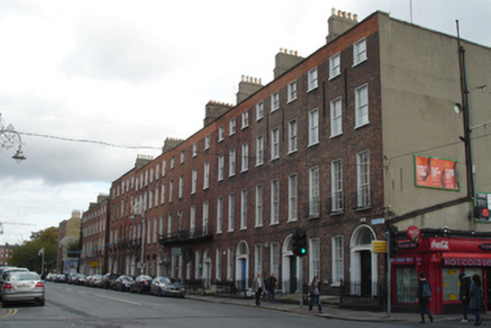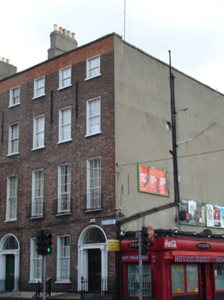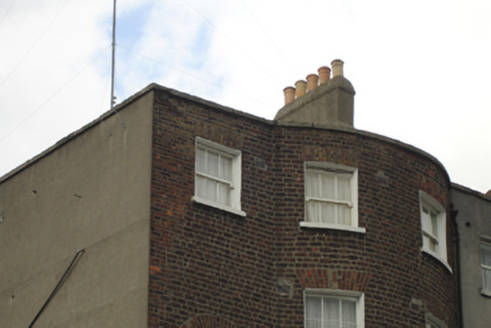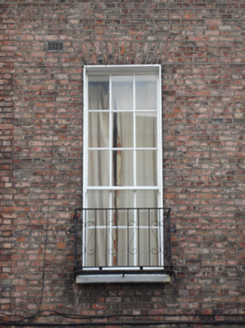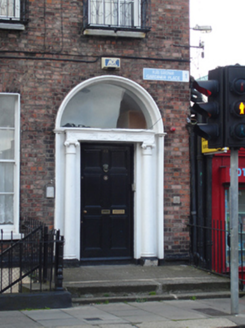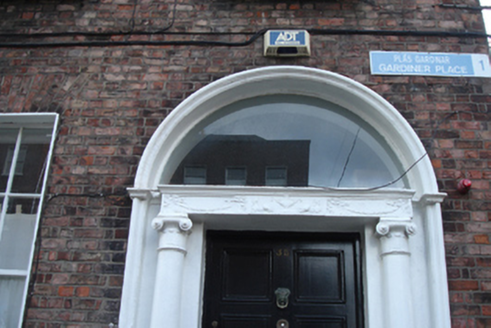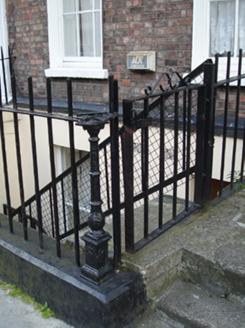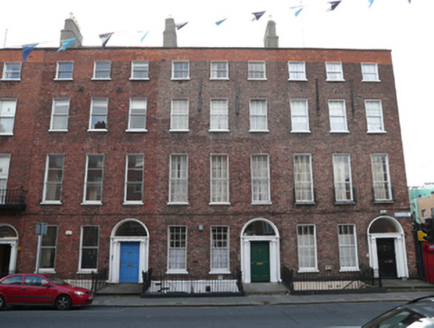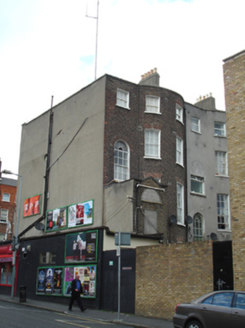Survey Data
Reg No
50010934
Rating
Regional
Categories of Special Interest
Architectural, Artistic
Original Use
House
In Use As
Apartment/flat (converted)
Date
1790 - 1795
Coordinates
315856, 235338
Date Recorded
22/09/2011
Date Updated
--/--/--
Description
End-of-terrace three-bay four-storey house over exposed basement, built c.1792, with full-height bow and two-storey return. Single-storey commercial unit abutting southwest gable in separate ownership. Now in multiple occupancy. M-profile slate roof, hipped to gable and set behind rebuilt parapet wall with granite coping. Two stepped rendered chimneystacks to party wall with clay pots. Cast-iron hopper, plastic downpipe and cast-iron vent pipe to gable. Red brick walls laid in Flemish bond to painted granite plinth course over painted rendered walls to basement level. Brown brick walls to bowed rear elevation and cement rendered walls to gable. Gauged brick flat-arched window openings with painted granite sills, patent rendered reveals, replacement iron balconettes to first floor and replacement timber sliding sash windows throughout, six-over-six pane to ground and second floor, nine-over-six to first floor, three-over-three to top floor and one-over-one pane to basement. Bowed sash windows to rear bow wit round-headed opening to stair having integrated fanlight. Round-headed door opening with moulded masonry surround and advanced painted masonry Ionic doorcase. Replacement flat-panelled timber door flanked by engaged Ionic columns on plinth bases supporting embellished lintel cornice and plain fanlight. Door opens onto granite platform and two granite steps enclosed by wrought-iron railing and cast-iron corner posts. Matching iron railing set on concrete plinth wall encloses basement area.
Appraisal
Terminating the terrace and built as one of three similar houses, this example conforms to plot size and parapet height as laid out in 1792. This house retains its original classical-style doorcase and fenestration pattern. The bow to the rear is an interesting feature. The retention of timber sash windows and of the entrance and basement area features and details enhances the building and ensures that this house plays an important role in maintaining the intact appearance of the streetscape.
